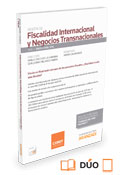
The debate over how the U.S. tax regime should interact with the OECD-driven Pillar 2 global minimum tax has escalated sharply in October 2025. Brussels is considering a “side-by-side” approach allowing U.S. multinationals to use their domestic tax systems in lieu of certain Pillar 2 obligations. But can such an arrangement survive the legal, technical, and fairness tests?
The OECD’s Pillar 2 global minimum tax (GloBE) represents one of the most ambitious international tax frameworks adopted, designed to ensure that multinational enterprise (MNE) groups with consolidated revenue above €750 million pay at least 15% effective tax in each jurisdiction.
The European Union, after transposing Pillar 2 through its 2022 Directive, is now considering an unprecedented accommodation for the United States: a “side-by-side” or conditional equivalence arrangement that would treat certain U.S. domestic minimum-tax regime, such as GILTI, BEAT, or the forthcoming NCTI, as satisfying EU Pillar 2 obligations.
The proposal reflects both technical pragmatism and political realism. It aims to prevent double taxation of U.S. multinational groups while maintaining a workable relationship with the world’s largest economy, whose own minimum-tax structure diverges significantly from the OECD template.
At stake is the credibility of the “global floor.” Can a minimum tax remain global if major players are permitted bespoke compliance routes? This is the main question, and it is no longer theoretical. It is being actively debated in Brussels and was the focal point of the European Parliament’s FISC hearing on 23 September 2025 on “Tax Implications of U.S. Policy Shifts.”
The “Side-by-Side” Concept and Legal Architecture
Under this approach, the EU would acknowledge that U.S. multinationals already pay a form of minimum tax under GILTI and related rules. Instead of imposing a duplicative top-up through the Income Inclusion Rule (IIR) or Undertaxed Profits Rule (UTPR). This way, U.S. entities could demonstrate that their domestic effective rate meets or exceeds the 15 % threshold, thus qualifying for a safe harbour.
However, as Benjamin Angel (DG TAXUD) underlined, direct equivalence is legally untenable under the current Directive. Any accommodation would need to take the form of a temporary or conditional safe harbour, requiring close alignment of:
- Base definitions (covered taxes, deferred tax accounting, hybrid mismatches)
- Timing rules (loss carry-forward, deferred credits, jurisdictional blending)
- Anti-avoidance mechanisms (CFC interaction, QDMTT prioritization)
Because the Directive must be transposed by each Member State, even a harmonized EU decision could fragment in practice. Several states—particularly those with strict anti-avoidance traditions—may resist granting exemptions they perceive as favoring U.S. competitors.
Insights from the September 2025 Hearing
The September hearing revealed the intellectual and political divide shaping the debate, where some experts presented some important warnings. The hearing thus revealed a broader policy tension: the EU’s commitment to neutrality versus the geopolitical need to avoid tax conflict with Washington.
Prof. Kimberly Clausing (UCLA) warned that changes in U.S. corporate tax rates, foreign-tax-credit limitations, and repatriation incentives could distort cross-border investment flows, ultimately challenging the competitiveness of European firms.
Dr. Lúcio Vinhas de Souza (BusinessEurope) emphasized the danger of asymmetrical treatment: if U.S. groups secure exemptions while EU groups remain fully bound by Pillar 2, the EU’s single-market level playing field could erode.
Quentin Parrinello (EU Tax Observatory) argued that equivalence without full alignment would undermine Pillar 2’s normative integrity and weaken global tax coordination.
Structural Risks to the Pillar 2 Regime
The “side-by-side” proposal, if pursued without rigorous safeguards, risks fragmenting the global minimum-tax system. The principal vulnerabilities are:
- Fragmentation of the Global Minimum Tax
A carve-out for U.S. groups erodes the idea of a consistent global floor. Other countries may demand similar treatment (e.g. China, Canada, Japan).
- Fairness and Treaty Concerns
If the EU gives preferential treatment to U.S.-taxed groups, it could clash with fair competition norms and tax treaties.
- Implementation complexity
Aligning U.S. tax rules with GloBE rules (timing, deductions, carrying over losses) will be extremely difficult. Some mismatches may lead to double taxation or double non-taxation.
- Interim exposure risk
Before carve-outs are in place, U.S. groups are especially at risk of IIR top-ups or UTPR adjustments in EU states that adopt more aggressive stances.
- Political backlash & member state divergence
Some members may refuse or delay adopting carve-outs. Others might impose countermeasures or levies.
Specific Impacts on U.S. Multinationals
For U.S. groups with European subsidiaries, the immediate stakes are substantial:
- Exposure to IIR/UTPR Top-Ups – Until the EU finalizes any carve-out, EU-based affiliates remain subject to potential top-ups even where consolidated U.S. tax already exceeds 15 %.
- Compliance Burden – Parallel reporting under both U.S. and GloBE rules could create costly duplication. Systems will need recalibration to reconcile jurisdictional blending under GILTI with entity-level computation under GloBE.
- Dispute Risk – Inconsistent interpretations between EU Member States may lead to controversy or MAP claims over double inclusion.
- Strategic Planning – U.S. groups may need to model divergent scenarios (full Pillar 2, side-by-side, or no carve-out) to forecast cash-tax exposure and deferred-tax recognition.
- Reputational Considerations – Any perception of “U.S. privilege” could invite political scrutiny or public criticism, especially where EU groups shoulder higher top-ups.
In short, while the proposed arrangement could relieve immediate duplication, it does not remove uncertainty; rather, it replaces tax risk with policy risk.
Rapid-Action Strategies for Multinationals
Expert practitioners recommend five practical steps:
- Model Exposure – Quantify IIR and UTPR effects under both current and hypothetical safe-harbour scenarios.
- Map Technical Gaps – Compare GILTI/BEAT/NCTI mechanics with GloBE on tax base, deferred tax, and credit limits.
- Monitor Brussels and National Consultations – Track any proposed amendment to the EU Directive and each Member State’s transposition timetable.
- Engage Early with Authorities and Business Associations – As the September hearing showed, political engagement can shape outcomes.
- Design Contingency Plans – Prepare for delayed or rejected carve-outs, including cash-flow reserves, alternative holding-structures, or QDMTT optimization.
A Pragmatic Path Forward
The hearing suggests mechanisms in order to reconcile coherence with political panorama, there is a need to a credible structured safe-harbour framework. Thus, it is recommended that the EU should:
Define transparent equivalence tests, aligning calculation bases and ensuring outcome-based comparability rather than formal identity, require joint OECD–EU monitoring, preventing abuse and allowing periodic recalibration as U.S. law evolves; and guarantee reciprocity, ensuring that EU firms operating in the U.S. receive symmetrical treatment.
Such a mechanism would neither abandon Pillar 2’s universality nor penalize compliant taxpayers. It would preserve coordination while acknowledging systemic divergence, as a necessary compromise in today’s multipolar tax landscape.
Conclusion
The “side-by-side” debate is more than a technical adjustment; it is a test of whether global tax governance can withstand national politics. The EU’s deliberations, this fall, reveal a delicate balance between safeguarding competitive neutrality and maintaining constructive transatlantic relations.
For U.S. multinationals, the coming months will determine whether their global-minimum-tax compliance becomes streamlined through equivalence or mired in dual-system exposure. For the EU, the choice will define whether Pillar 2 remains a universal benchmark or fragments into a network of negotiated exceptions.
In my view, the prudent course lies in controlled coexistence, a narrowly tailored safe-harbour underpinned by transparency, comparability, and reciprocity. Only through such disciplined coordination can both blocs preserve the credibility of the global minimum-tax project and avoid reigniting the fiscal unilateralism that Pillar 2 was meant to end.
The future will tell us.
To Be Continued….
Cheers!
The opinion expressed in this article is exclusively that of the author and does not reflect and cannot be related to her professional environment.




